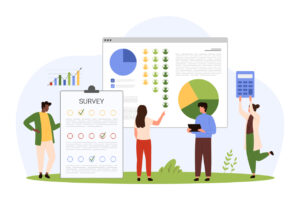Stacie Barrett of Domino’s on unlocking success with data-driven decision-making
Barrett shares how she and her team catapulted Domino’s newsletter readership to 100%.

When you hear the word data, you might immediately let out a deep sigh and think about how numbers have been something you’ve been trying to avoid. You’re a communicator, right? Words are your forte, not usually numbers. But in all seriousness, using data to inform your decision-making isn’t about just the numbers, but the story the data tells. And as communicators, storytelling is a go-to tool.
Stacie Barrett, director of internal communications at Domino’s, spoke with Ragan to share how she uses data to inform her decision-making and how it helps to make the case for resources and tools.
“What we use data for is to measure the effectiveness of our communications, especially if you are trying to drive impact, budget, inform, and make thoughtful decisions,” Barrett said. “If you have data it makes it easier to do that.”
Embrace data as your compass
Think of data as your compass in the landscape of decision-making, guiding you not only in assessing effectiveness but also in securing crucial resources and budgets. Data-driven decision-making involves using concrete facts, metrics, and data to strategically steer business choices in line with your company’s goals, objectives and initiatives.
“One of the things we did to get funding for our current intranet tool was show the amount of traffic we had on our previous tool and how many people were coming to (the intranet) as a resource,” Barrett said. “That allowed us to get funding for an updated platform and IT resources dedicated to supporting that platform.”
If you start with the data, it can help drive the decision-making and allow you to impact the way the business works.
For instance, Domino’s franchisees were spending 15-30 minutes per week, looking at email because that’s how they consume information and that data let Barrett know there was too much content.
“We wouldn’t have been able to make a smart business decision about how to change that without having that data to start with,” Barrett said. “Having that data also allowed us to influence leadership and the support behind sending less content, and that’s what drove our readership rates for our newsletter along with a format change, from 4% up to 100%.”
The data showed opportunities for improvement within the business.
“It can tell you when you’re doing something wrong and where you can improve,” Barrett said.
Speaking the language of business needs
Whether you’re a team of one or part of a compact team, the key lies in understanding the business needs and aligning your approach accordingly. Working in tandem as a team opens avenues for impactful contributions.
“If you know that there are some real and true business needs that you could do more of, then being able to speak in that language, as opposed to I have a lot of work – it is we could fill in and so better support the business with these resources,” Barrett said.
Barrett and her team spent a lot of time on tasks that might not have been the most effective, and even though gathering data took extra time and effort, it ultimately saved them work.

Stacie Barrett
“It allows you to have an intelligent conversation with executive leadership, that will make it more likely for you to get the support and resources and backing,” Barrett said. “Sometimes it’s just trust, in your knowledge, sometimes you need the data to inform and to help support your gut instinct as a communicator, and some things that you know, in your heart to be true.”
To gather data, tools don’t need to be extravagant. Platforms like SurveyMonkey and Microsoft Forms, or even orchestrating focus groups can be beneficial instruments in gathering the data.
Take your limited resources, focus on your top goals or objectives and articulate to leadership what you could do if you had those additional resources by making a business case. “And then it’s about the business and not about your workload,” Barrett said.
Storytelling plays a part in this process and as a communicator, you’ll inevitably have to use your words. If you lean in on your words, you can build that muscle, it will help you communicate with decision-makers. “It will help you make better decisions so that you can let your creativity flourish, to tell the right stories to the right people at the right time and the right tool,” Barrett said.
Learn more about using data to inform your decision-making and other relevant topics by joining us at Ragan’s Employee Communications 101 Virtual Conference on Jan. 25.
Isis Simpson-Mersha is a conference producer/ reporter for Ragan. Follow her on LinkedIn.







